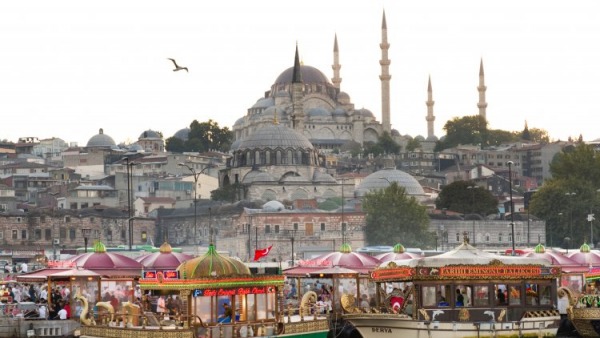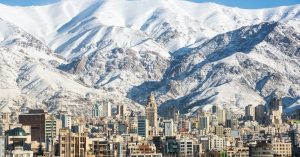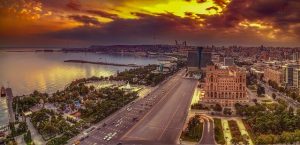Iran : Safety by City
Warnings & Dangers in Iran

OVERALL RISK : MEDIUM
Iran is quite safe for tourists if you observe increased caution and avoid particularly dangerous areas of the country. Always watch your belongings and surroundings, do not leave bags unattended, do not accept help from strangers. After dark, it is better to be in your hotel room.

TRANSPORT & TAXIS RISK : MEDIUM
Public transport is not safe for travel. Use a rented car or taxi to get around. Call only licensed taxi services and negotiate the price of the trip in advance if the vehicle does not have a taximeter.

PICKPOCKETS RISK : HIGH
There are a lot of pickpockets in Iran. You need to monitor your things continually. Be sure not to leave backpacks and bags unattended. Also, watch your surroundings, do not accept help from strangers - they will most likely try to deceive and rob you.

NATURAL DISASTERS RISK : MEDIUM
Major natural disasters include frequent severe earthquakes, floods, droughts, landslides, desertification, deforestation, storms, and the like. Earthquakes take a heavy toll. Iran is part of the Alp-Himalaya orogenic belt and is known as part of the youngest and last orogenic regions of the world.

MUGGING RISK : LOW
Armed severe robberies and assaults are usually rare in Iran. Avoid the tourist area of Isfahan, where there has been a recent increase in looting. Otherwise, common sense and discretion will help you travel peacefully around the country.

TERRORISM RISK : HIGH
The risk of terrorism in Iran is quite high. Extremist organizations often create conflicts in this country. Be sure to study the political situation in Iran before your visit here. Avoid political and religious demonstrations.

SCAMS RISK : MEDIUM
Fraud is not very common in Iran. However, some individuals want to trick a tourist. Most often this happens at train stations, at the airport, and in a taxi. Be sure to use only licensed services.

WOMEN TRAVELERS RISK : MEDIUM
Female travelers will typically not encounter problems when visiting Iran. Contrary to popular belief, Iranian women usually differ little from those in the West. Women by law must wear a headscarf in public.
How Safe Is Iran for Tourists?
The crime rate in Iran ranges from low to very high.
The main problems in the country are related to the theft of things and hacking, car theft, a high level of bribery, and corruption.
Speaking about terrorism, Iran is one of the safest countries in the Middle East.
Iran may be safer than Westerners expect.
Most people are genuinely friendly and interested in learning about you and your country, so leave your prejudices aside and think frankly.
Iran remains a country with a relatively low crime rate, although thefts and robberies have become more frequent in recent years.
Do not forget about yourself and take the usual precautions against pickpockets in crowded bazaars and on buses.
Travelers should avoid the southeastern part of Iran, especially the Sistan va Balochistan province. Drug trafficking thrives on smuggling heroin from Afghanistan.
There are many robberies, kidnappings, and murders.
Avoid discussing country policies or other political issues.
Local people can react sharply to such topics.
Do not take pictures of people and public facilities in Iran – such as airports, military facilities, government buildings.
This may result in fines or criminal charges.
Do not insult Islam and avoid religious topics in dealing with local people.
If you are an atheist, condemnation awaits you here.
Do I Need a Visa to Visit Iran?
Visitors to Iran must obtain a visa from one of the Iranian diplomatic missions unless they come from one of the visa-exempt countries or countries eligible for a visa on arrival. All visitors must hold a passport valid for at least 6 months. Admission is refused to women not wearing Islamic head cover, scarf, long sleeves and stockings. Citizens of Israel are totally banned from entry to Iran
Which Currency Is Used in Iran?
The rial is the official currency of Iran. On July 31, 2019, the Iranian government agreed with the Central Bank’s proposal to introduce monetary reform and introduce a new currency unit instead of rial – a fog equal to 10,000 rials. The decision on reform will enter into force after approval by the Iranian parliament.
How's the Weather like in Iran?
The best times to visit Iran for ideal weather are mid-March to mid-May and October to December. Average temperatures in Iran vary drastically, and the weather feels very lovely much of the year but hot in the summer and cold in the winter with a little chance of rain or snow throughout the year.
What Do I Need to Know about Airports in Iran?
Tehran Imam Khomeini International Airport is the primary international airport in Tehran, the capital city of Iran, located 30 kilometers southwest of Tehran. All international flights in Tehran, except Hajj charters, are currently served by this airport, and Mehrabad Airport serves all domestic flights.
Should I Get Travel Insurance for My Travels?
Just like anywhere else, the travel insurance policy is a must when visiting a foreign country. Make sure you got it before starting your journey, the customs officer may ask for it.
What Are Some Things to Do in Iran?
Iran is an Islamic republic in the Persian (Arab) Gulf zone with historical monuments of the Persian Empire. One of them is the ruins of the ancient city of Persepolis, the capital of the empire, founded in the VI century BC. e. Darius I. In the current capital of the country, Tehran, the magnificent Golestan Palace, the residence of the Qajar dynasty from 1794 to 1925, as well as such modern buildings as the Bordje Milad, 435 meters high, are located.
Is the Water in Iran Safe to Drink?
Tap water is safe to drink in most of Iran, though many travellers stick to bottled water, which is widely available. Do not drink water from rivers or lakes as this may contain bacteria or viruses that can cause diarrhoea or vomiting.
Is Uber Safe in Iran?
Uber taxi is not available in Iran. But you can choose any other taxi services in your smartphone app.


